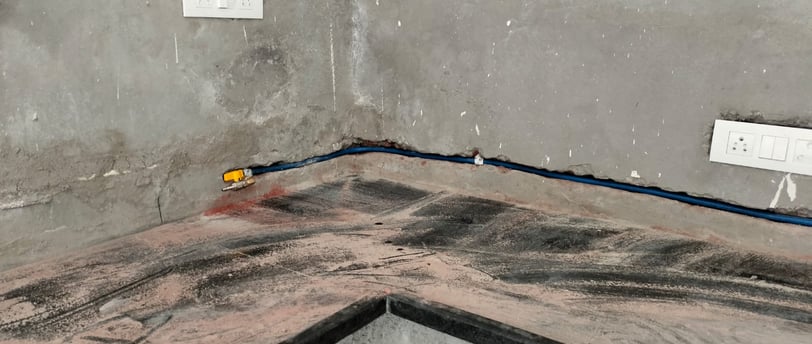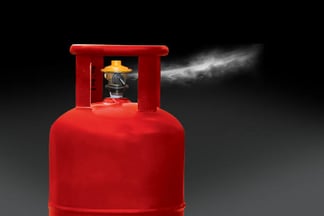What Are the Signs That Your Gas Pipeline Needs Repair?
Gas pipelines are essential for ensuring the safe and efficient delivery of gas to your home. However, like any other part of your home's infrastructure, they require regular checks to maintain safety and functionality.
11/8/20244 min read


Gas pipelines are essential for ensuring the safe and efficient delivery of gas to your home. However, like any other part of your home's infrastructure, they require regular checks to maintain safety and functionality. Whether your pipeline is newly installed or has been in place for years, early identification of issues is crucial for the longevity and safety of your system. Here, we’ll discuss the warning signs to look for, especially for a domestic copper gas pipeline fitting, to help you detect problems early on.
1. Abnormal Smell of Gas
One of the most rapid and noticeable signs of a potential gas leak is the typical smell of gas. The familiar odor, which resembles sulfur or rotten eggs, is added to natural gas as a safety measure. If you detect this smell, especially near your domestic copper gas pipeline fittings or connections, it could indicate a leak and requires immediate attention. Turn off the gas, ventilate the area, and contact a professional right away.
2. Hissing or Whistling Sounds Near the Pipeline
Hearing unusual noises like hissing or whistling around the pipeline or fittings could mean that gas is escaping through a small crack or faulty fitting. Copper gas pipeline fittings, while durable, can still experience wear and tear over time. Such sounds should not be ignored, as they might signal a dangerous leak that could worsen if left unattended.
3. Increased Gas Bills Without Increased Usage
If you notice an unexpected spike in your gas bill without a significant increase in usage, it may be due to a gas leak. Leaks in your domestic copper gas pipeline fitting or other parts of the system can lead to a gradual but costly escape of gas, resulting in higher monthly expenses. Regular inspection can help spot leaks early, saving you money and ensuring safety.
4. Rust or Corrosion on Copper Fittings
Copper pipeline fittings are commonly used for their durability and resistance to corrosion. However, exposure to moisture, chemicals, or environmental factors can lead to rusting and corrosion over time. Visible signs of wear or greenish-blue stains around your copper gas fittings are indicators that repairs or replacements may be needed. This can prevent further deterioration, which could lead to leaks.
5. Dead or Discolored Vegetation
A subtle sign of a gas leak is a sudden change in vegetation near your gas line. If plants or grass close to your copper gas pipeline fittings are wilting or dying without an apparent reason, it may indicate a gas leak. The escaping gas can reduce the amount of oxygen in the soil, killing plants in the area. Pay attention to any unexpected changes in vegetation health, especially near pipeline locations.
6. Physical Damage or Movement of Gas Lines
Shifting soil, severe weather conditions, or nearby construction can cause physical damage to your gas pipelines. If you notice that the gas line appears shifted, bent, or otherwise altered, it's essential to contact a professional for an inspection. Even minor disturbances in the placement of domestic copper gas pipeline fittings can lead to serious safety issues.
7. Poor Appliance Performance
If gas-powered appliances such as stoves or water heaters are not functioning efficiently, it could point to a gas line issue. Poor or uneven flames in a gas stove, a drop in heating efficiency, or frequent appliance shutdowns may indicate that gas isn’t reaching them properly. This could be due to a blockage or leak in the gas pipeline, particularly around worn fittings or connections.
Steps to Take if You Suspect Gas Pipeline Issues
If you notice any one of these signs in your gas pipeline installation system, follow these steps to ensure safety:
Turn Off the Gas Supply: Immediately switch off your gas supply at the main valve.
Ventilate the Area: Open all windows and doors to allow fresh air to circulate.
Avoid Ignition Sources: Do not light any flames or use electrical appliances.
Contact a Professional: Certified gas technicians can inspect your domestic copper gas pipeline fittings and perform any necessary repairs safely.
Preventative Measures to Keep Your Gas Pipeline in Good Condition
Preventative maintenance can go a long way in ensuring the safety and longevity of your gas pipeline system:
Regular Inspections: Schedule periodic inspections for your copper gas fittings to catch issues early.
Upgrade Aging Pipelines: Older systems may be more prone to leaks and corrosion, so consider upgrading them if they’re showing wear.
Protect Against Moisture: Ensure fittings are well-protected from environmental factors that can cause rust or corrosion.
Why Copper Fittings Are a Reliable Choice for Home Gas Lines
Choosing copper fittings for your home gas line offers several benefits, including corrosion resistance and durability. Copper is known to be long-lasting, making it a popular choice for domestic copper gas pipeline fittings. However, even copper can show signs of wear over time, so it's essential to remain vigilant and conduct regular maintenance.
Final Thoughts
Your gas pipeline system is a critical component of your home, providing comfort and convenience. Detecting early signs of issues, especially in domestic copper gas pipeline fittings, is vital for both safety and cost savings. Regular maintenance, prompt attention to warning signs, and understanding when to seek professional help can ensure that your home remains safe and your gas system functions efficiently.


Contact US Today:
Email: info@vaultgaspipeline.site
Phone:
+91 8522 09 2525
+91 95155 92020


Quick Links:
Services
Our Process
Why Choose us
Contact us
Our Services:
Gas Pipeline Installation
Gas Pipeline Maintenance
